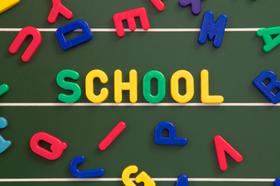For the 2025 school year, there are 5 public elementary schools serving 1,829 students in Grainger County School District. This district's average elementary testing ranking is 3/10, which is in the bottom 50% of public elementary schools in Tennessee.
Public Elementary Schools in Grainger County School District have an average math proficiency score of 31% (versus the Tennessee public elementary school average of 39%), and reading proficiency score of 31% (versus the 36% statewide average).
Minority enrollment is 8% of the student body (majority Hispanic), which is less than the Tennessee public elementary school average of 43% (majority Black).
Overview
This School District
This State (TN)
# Schools
9 Schools
1,500 Schools
# Students
2,986 Students
719,413 Students
# Teachers
218 Teachers
48,388 Teachers
Student : Teacher Ratio
14:1
14:1
Student By Grade
District Rank
Grainger County School District, which is ranked within the bottom 50% of all 147 school districts in Tennessee (based off of combined math and reading proficiency testing data) for the 2022-2023 school year.
The school district's graduation rate of 88% has decreased from 97% over five school years.
Overall District Rank
#114 out of 147 school districts
(Bottom 50%)
(Bottom 50%)
Math Test Scores (% Proficient)
27%
34%
Reading/Language Arts Test Scores (% Proficient)
29%
37%
Science Test Scores (% Proficient)
33%
40%
Graduation Rate
88%
90%
Students by Ethnicity:
Diversity Score
0.16
0.61
% American Indian
n/a
n/a
% Asian
n/a
2%
% Hispanic
6%
15%
% Black
1%
21%
% White
92%
57%
% Hawaiian
n/a
n/a
% Two or more races
1%
5%
All Ethnic Groups
District Revenue and Spending
The revenue/student of $12,308 is higher than the state median of $11,979. The school district revenue/student has grown by 7% over four school years.
The school district's spending/student of $11,611 is higher than the state median of $11,478. The school district spending/student has grown by 7% over four school years.
Total Revenue
$37 MM
$12,104 MM
Spending
$35 MM
$11,597 MM
Revenue / Student
$12,308
$11,979
Spending / Student
$11,611
$11,478
Best Grainger County School District Public Elementary Schools (2025)
School
(Math and Reading Proficiency)
(Math and Reading Proficiency)
Location
Grades
Students
Rank: #11.
Joppa Elementary School
(Math: 44% | Reading: 37%)
Rank:
Rank:
7/
Top 50%10
4745 Rutledge Pike
Rutledge, TN 37861
(865) 828-5721
Rutledge, TN 37861
(865) 828-5721
Grades: PK-6
| 415 students
Rank: #22.
Bean Station Elementary School
(Math: 32% | Reading: 30%)
Rank:
Rank:
5/
Bottom 50%10
200 Bean Station School Rd
Bean Station, TN 37708
(865) 767-2131
Bean Station, TN 37708
(865) 767-2131
Grades: PK-6
| 421 students
Rank: #33.
Rutledge Elementary School
(Math: 31% | Reading: 30%)
Rank:
Rank:
5/
Bottom 50%10
7480 Rutledge Pike
Rutledge, TN 37861
(865) 828-5530
Rutledge, TN 37861
(865) 828-5530
Grades: 2-6
| 334 students
Rank: #44.
Washburn School
(Math: 21% | Reading: 27%)
Rank:
Rank:
3/
Bottom 50%10
7925 Hwy 131
Washburn, TN 37888
(865) 497-2557
Washburn, TN 37888
(865) 497-2557
Grades: PK-12
| 483 students
Recent Articles

The 15 Biggest Failures of the American Public Education System
The world is in a constant state of change and those who fail to adjust fall behind. Unfortunately, the American public education system has not kept up with the times and is currently facing a number of serious problems. Keep reading to learn about the biggest failures affecting the modern U.S. public education system as well as some of the trends that could spark change.

Florida Governor Calls for More Funding for State鈥檚 Public School System
Florida Governor Rick Scott has introduced a state budget for next year that pumps one billion more dollars into the public school system. We鈥檒l look at his reasons for the increase and the responses to the proposal.

Can Your Child鈥檚 School Meet the National Standards?
The article discusses the challenges public schools face in meeting national educational standards. It examines current performance trends, identifies key issues affecting student achievement, and explores potential solutions for improving academic outcomes across U.S. public schools.





